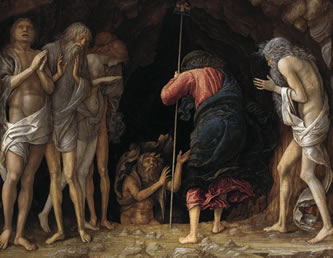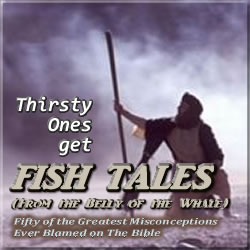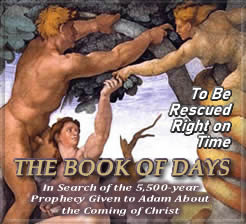A Case for The Tales
Indelible Fingerprints on History
I have studied in four seminaries and before that, a leading Christian college, yet never was I introduced to any of the material W. Kent Smith has brought forth here in The Book of Tales, a work that sheds light on long-lost truths that the majority of modern Christians know nothing about. God has preserved many things concerning His purposes as well as His indelible fingerprints on history. This book sets out to tell the story of those purposes and of those fingerprints.
My initial interest in The Tales was due to my research into a 5,500-year messianic prophecy that I become aware of while studying the Early Church and The Septuagint, the Greek translation of The Old Testament used by 2nd Temple Judaism and the Early Church. Known as ”the prophecy of the Great Five and a Half Days,” this messianic prophecy is certainly the greatest promise that God ever gave to mankind. According to this prophecy, given to Adam and Eve when they were expelled from Eden, the Messiah would come to Earth to rescue humanity after 5,500 years.
In addition to my interest concerning this prophecy, I was struck by several questions about 2nd Temple Judaism: What motivated the rabbis in the late first and early second century when they ”canonized” The Hebrew Bible? Why did The Septuagint version of The Old Testament have different books from the Masoretic Text? And why were so many previously accepted texts, such as The First Book of Enoch, completely ignored and excluded? I knew that earlier Jews had had a broader canon of Scripture than the one that the rabbis settled upon at Jamnia, but in many cases, I didn’t realize how important these “excluded” books were to understanding so many of our best-known Bible stories. Kent’s book picks up these themes and digs even deeper, with particular focus upon the 5,500-year prophecy.
Story Continues Below
Says Richard Price—the founder and CEO of Academia.edu—on his podcast In Depth With Academia:
The Book of Tales: Stories That Confirm the 5,500-year Prophecy Given to Adam About the Coming of Christ is:
To hear Price’s book review of The Book of Tales, CLICK HERE.
To hear Kent talk about the little-known biblical prophecy, which speaks of the 5,500-year chronology from Adam to Christ, with Zen Garcia, the host of the Internet talk show Secrets Revealed, CLICK BELOW.
Story Continues From Above
According to the 5,500-year chronology of The Septuagint, the coming of Jesus perfectly fit the timing of this prophecy and was one of the reasons so many Jews came to believe He was the Messiah. At which time the rabbis proceeded to “tamper” with The Hebrew Bible at the end of the first century AD, rejecting The Septuagint, and then translating their “doctored” Old Testament into three new Greek versions for future Jewish use. Why? One of the main reasons was to obscure the 5,500-year prophecy in order to stop Jews from coming to Jesus as their Messiah.
Worse still, because of the ongoing influence of Rabbinic Talmudic Judaism and the unfortunate influence of the likes of Jerome, many Christians not only remain in the dark about this 5,500-year prophecy but also end up dismissing the best extant sources of evidence for its veracity. When one removes such blinders and trusts the testimony of Early Church writers like Justin Martyr and Tertullian, we see, as The Book of Tales shows, that God Himself protected arguably the most significant messianic prophecy of all time. You may not agree with all of the author’s conclusions, but I assure you that your “traditions” will be challenged if you allow the evidence he presents through the narratives he tells to inspire you and your faith in the God of The Bible.
Just as First Enoch serves as an extensive commentary on Genesis 6, so too other so-called “apocryphal/pseudepigraphal” books shed much-needed light on aspects of the narratives of Adam and Eve, Abraham and Isaac, and other Old Testament patriarchs. Additionally, Kent introduces us to writings from The New Testament era that, while well known to the Medieval Church, have been ignored by modern-day Christians due to these works being deemed “non-canonical.” Most importantly, these works not only provide greater context to both Old and New Testament characters and events, but they also further testify to the critical importance of the 5,500-year prophecy.
To inspire millions, movies need to be made about The Tales. Following Kent’s lead as he depicts events in various works throughout this volume, I propose Enoch as the main character and narrator of one of the greatest stories that has yet to be filmed. Step aside Lord of the Rings!
As I told the author when we met, I believe that new evidence is forthcoming that will shed even more light on these issues and convince countless people that the things he contends are in fact true. Of course, only time will tell. But, until then, read The Book of Tales for yourself, and your fascination with God will grow, as will your trust in His promises.
For such a time as this…
Rev. David J. Hess
Rock OC Church
Dana Point, California







